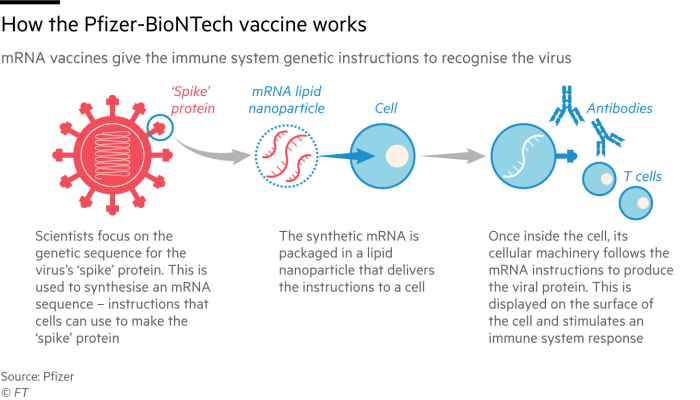How does the Pfizer/BioNTech vaccine works?

The German company BioNTech partnered with Pfizer to develop and test a coronavirus vaccine known as BNT162b2. The mRNA technology, short for messenger RNA vaccines like Pfizer's are often referred to as the vaccines of the future, since the technology is fairly new.
· The active ingredient is messenger RNA that carries instructions for making the virus’s spike protein, which it uses to gain entry to cells. The mRNA is synthetic, not extracted from actual viruses. It is delivered in a tiny sphere of inert fatty material called a lipid nanoparticle.
· A person infected with the coronavirus develops antibodies that neutralize this spike protein. So, RNA vaccines spur the body to produce that spike protein internally. The mRNA enters cells encased in a lipid molecule, then sends a coded message to the body to make the spike protein. That in turn triggers an immune response.
· The RNA-bearing nanoparticles are suspended in saline solution and injected into muscle tissue in the upper arm. The mRNA is then taken up by specialist immune cells, which follow its instructions to make the spike protein, just as they would do if they had become infected with the actual virus.
· The spike protein is recognized as foreign by the immune system, which mounts an attack against it. Antibodies, B cells and T cells are activated.
· An immune memory is also laid down, which means the immune system has learned how to defeat the pathogen and is primed to mount a swift response if it encounters the coronavirus again.
Source: https://www.pfizer.com/products




Comments
You must login to write comment